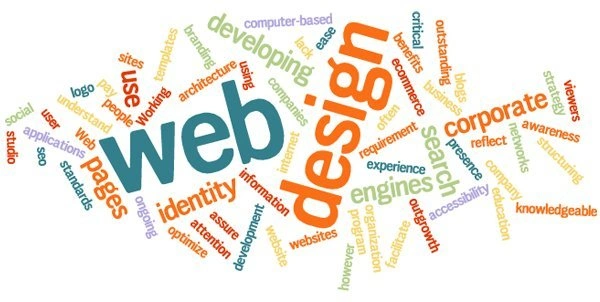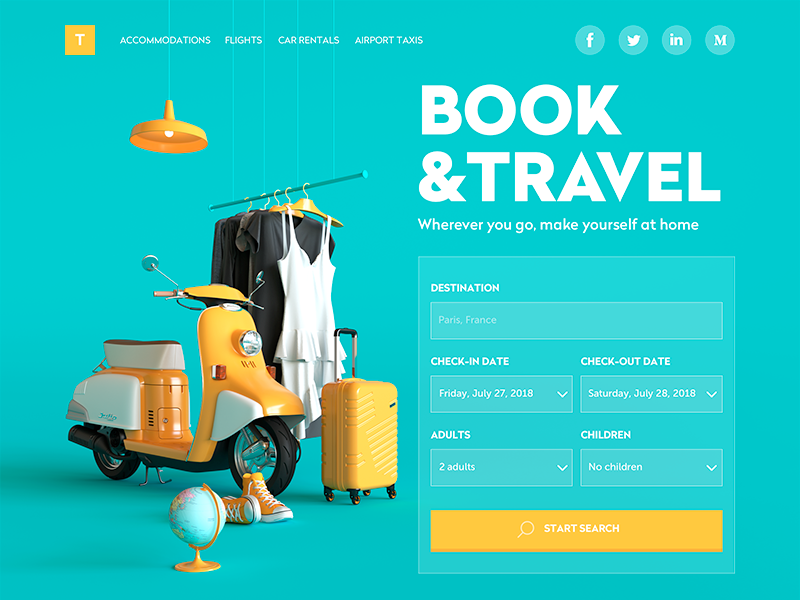The Very Best Kinds of Web Layout to Enhance Customer Experience and Engagement
In the ever-evolving landscape of digital communication, the efficiency of website design substantially impacts user experience and involvement. Various style approaches, such as minimalist, receptive, and interactive formats, each deal unique advantages that can deal with diverse individual requirements. Understanding which types of website design finest serve these goals can be crucial for companies intending to boost client satisfaction and retention. Nevertheless, the inquiry remains: which design aspects really resonate with individuals and foster purposeful involvement? The expedition of these principles exposes important understandings that might redefine your approach to website design.
Minimalist Website Design
As digital landscapes become progressively cluttered, minimal website design has emerged as an effective method to improving individual experience. This design viewpoint prioritizes simpleness, focusing on crucial components while removing unneeded interruptions. By utilizing sufficient white space, uncomplicated navigating, and a restricted color scheme, minimalist design fosters quality and guides user focus to vital content.
The core principle of minimalist website design is to produce a smooth interaction for users. By lowering cognitive tons, users can promptly realize information without really feeling overwhelmed. This straight technique not only improves use however also urges engagement, as visitors are most likely to explore a site that is aesthetically appealing and simple to browse.
In addition, minimalist design typically highlights typography and images, utilizing these elements strategically to communicate messages properly. This concentrate on important components can enhance brand name identification and develop a remarkable user experience. Essentially, minimalist website design is not just a pattern; it is a thoughtful approach that acknowledges the value of user-centered style. By removing away supplementary aspects, designers can create an extra interesting, efficient, and pleasurable Web experience for all users.
Receptive Web Layout
In today's varied digital environment, receptive Web layout has ended up being vital for developing a smooth customer experience throughout a wide variety of gadgets. As users gain access to sites on mobile phones, desktops, laptop computers, and tablets, the capacity of an internet site to adapt its format and content to various display sizes and resolutions is critical.
Responsive Web design uses adaptable grids, photos, and CSS media queries to ensure that Web content is provided efficiently, no matter the gadget used. This technique not only boosts the aesthetic charm of a web site however additionally significantly improves use. Customers are most likely to involve with a site that offers a consistent experience, as it removes the disappointment of having to zoom in or scroll exceedingly.
By embracing responsive layout, companies can boost their visibility and reach a more comprehensive target market. In summary, responsive Web layout is a fundamental method that enhances individual experience, engagement, and overall fulfillment.
Interactive Web Design
Receptive Web style prepares for enhancing individual experience, but interactive Web layout takes this a step additionally by involving customers in a much more dynamic means - Aligned Position Web Design. By incorporating aspects such as computer animations, clickable prototypes, and real-time feedback, interactive Web style mesmerizes customers, attracting them right into a richer surfing experience
This method not only fosters engagement however additionally urges individuals to explore content actively as opposed to passively consuming it. Techniques such as gamification, where users earn rewards for finishing jobs, can significantly enhance the time invested in a site and boost total satisfaction. Interactive functions can streamline intricate info, making it much more enjoyable and digestible.

Incorporating interactive layout elements can additionally lead to greater conversion prices, as users are most likely to engage with a website that proactively involves them. Aligned Position Web Design. Eventually, interactive Web design transforms customer experiences into unforgettable trips, guaranteeing that site visitors return time and once more
Flat Design
Characterized by its minimalistic method, flat style emphasizes simplicity and performance, removing unneeded aspects and concentrating on crucial features. This design approach prioritizes functionality, making sure that individuals can navigate interfaces effortlessly and efficiency. By employing a tidy visual, level style gets rid of the clutter commonly located in extra luxuriant styles, thus enhancing user emphasis on web content and capability.
The trademark of flat design depends on its usage of strong shades, straightforward typography, and geometric shapes. These elements add to a visually attractive interface that is both friendly and modern-day. Furthermore, flat design fosters a feeling of clearness, allowing customers to discern crucial activities and details without disturbance.
Additionally, level style is especially reliable in receptive Web style, as its simpleness converts well throughout various devices and display sizes. The lack of intricate textures and gradients lessens packing times, which is critical for keeping user engagement. As electronic landscapes proceed to advance, level design stays a relevant selection for creating user-friendly sites that enhance general experience. By focusing on vital features, level layout not just satisfies customer needs however additionally motivates smooth interaction, making it an essential element of effective Web design techniques.
Adaptive Web Style
Adaptive Web layout tailors the individual experience by creating multiple fixed layouts tailored to various display dimensions and tools. Unlike receptive design, which fluidly readjusts a single layout, flexible design uses unique formats for particular breakpoints, making sure ideal discussion on various systems. This approach permits developers to concentrate on the unique attributes of each device, enhancing usability by delivering exactly what customers need based on their context.
Among the key advantages of adaptive website design is its ability to optimize lots times YOURURL.com and efficiency. By serving tailored web content and photos that fit the individual's gadget, internet sites can lessen information use and enhance loading speeds. This is particularly useful for users with slower links or minimal data strategies.

Additionally, flexible layout helps with a much more controlled and regular branding experience. Given that designers produce multiple designs, they can make certain that the visual aspects straighten with the brand name's identity across various platforms - Aligned Position Web Design. This leads to a natural customer experience, enhancing engagement and advertising customer retention
Conclusion
Minimalist style promotes clarity and emphasis, while responsive design ensures adaptability throughout numerous devices, advertising ease of access. Collectively, these design comes close to contribute to the creation of straightforward settings that not only improve satisfaction yet likewise drive higher conversion rates, emphasizing their essential value in contemporary Web style techniques.

Minimalist design fosters clearness and emphasis, while receptive layout makes certain flexibility throughout various devices, promoting ease of access. Collectively, these style approaches contribute to the creation of user-friendly atmospheres that not just boost contentment yet additionally drive greater conversion rates, highlighting their vital significance in contemporary Web design strategies.
Comments on “Aligned Position Web Design: Expert Web Design Strategies for Achieving Business Goals Online”